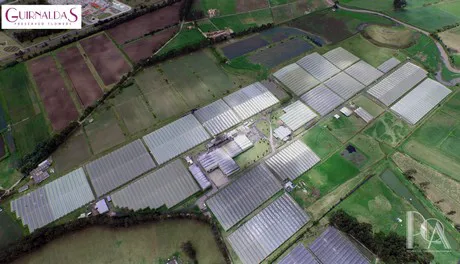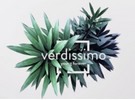
Stefanie Proy and Ole Faarbaek Jensen of Verdissimo at the IFTF 2017 in Vijfhuizen, the Netherlands.
Increasing demand
Over the last years, according to Faarbaek, more and more companies started to see the added value of preserved flowers and greenery as a new segment for decorative natural products, that do not compete with the traditional fresh flowers. "These flowers and plants have their own applications, such as the gift box concept or indoor vertical gardens", he says.
In the years that followed, many companies started to promote unique and innovative gift and decorative solutions with preserved flowers and according to Faarbaek, this has created an increase in demand. "Especially in 2017, we saw a very strong growth in both B2C and B2B. I think we are closer to reaching critical mass of awareness, which now means that many people around the industry and even outside have heard about the product and understand its benefits and limitations. This means that the preserved industry no longer needs to create every sale and there is a better market dynamic with a more clear space for preserved."
And due to the increase of awareness, preserved flowers have become a more profitable industry. "Verdissimo, and I think also many other smaller companies, are growing very strongly, in our case 25% growth", he says. "This is both due to the increase in demand and of course also our quality and broad product portfolio that allows customers to create a vast selection of different styles and designs with preserved."
Cannot be compared with fresh flowers
Preserved flowers used to be on high demand on similar holidays as fresh flowers, like Valentine’s day and Mother's day, but this no longer seems to be the case. "Many companies have now found a unique space for preserved greenery and flowers, we see similar and growing demands all year around."
Faarbeak is pleased with this development because, according to him, fresh flowers and preserved flowers should and cannot be compared directly. First of all, the preserved industry seems in some ways to be more complex than the fresh flower market as the process requires a long-term view and more planning for both suppliers and customers. "In the established fresh market, if you need something you can practically buy everything online and get same day delivery, independent of supplier. The preserved market requires 12-18 months planning to forecast what needs to be sold and because a high quality preserved flower requires specific varieties and treatment during the growth process, we cannot use all flowers from all growers, but rely mainly on our own supply."
And not only after harvest, but also before harvest more time and different attention is needed. "They require additional time in the field, more processes and more strict quality selection." As a result, this creates the third difference, the price. "They are around 2-4 times higher than fresh flowers, but of course they last longer and go into different applications as they are not used for the same customers and demands. And therefore it is not logical to compare fresh and preserved flowers from a price standpoint."

Verdissimo grows preserved roses and greens under 18 ha of production in Ecuador, Colombia and Spain. On the picture the farm in Colombia. In Spain, they have moved to a new factory in Valencia in May 2017. "This has allowed us to implement better production technology, automation and triple our capacity.
Growing and upcoming markets
According to Faarbaek, preserved nature is a trend worldwide. "There is so much focus on natural products in architecture, fashion, design and so on. Preserved flowers and greenery are natural despite the fact that they are no longer growing so they are being used in all of these industries." In general, he sees a strong growing demand from the traditional European markets and sees the same trend in new markets such as the United States, Middle East and Asia. "One of the advantages of preserved nature is that we can change the design (like new colors and effects) to fit the trend on a specific market. To give a simple example, we can color match a flower to a specific event, such as the yellow for the Thai Royal family."
Most popular flower
Verdissimo is one of the largest producers of preserved flowers and greenery both in terms of volume and variety. They have many different types of flowers ranging from different types of roses, chrysanthemums and carnations to more exotic flowers such orchids and a wide range of greenery and filler to combine with these flowers. Across all markets, Faarbaek still sees the highest demand for the classic rose. "It is the preserved flower that most people know and therefore it represents a large volume. However, we see stronger growth in many of the other products, especially greenery, as the market gets a better knowledge of what is available and how to work with the other product."
Future preserved flowers
Faarbaek hopes and expects that preserved flowers and plants will be a complete segment on its own in the future. "At this point it is not as well-known as fresh or artificial flowers, but I think it will be soon. This will also mean that people will understand that it offers a unique opportunity to create new product, it is not a long-lasting substitute for a fresh flower bouquet, but rather natural and renewable source for decorative items that can be used in many different contexts. I think that even in 50 years, people will still enjoy the changing and fragile beauty of a fresh flower bouquet, while preserved nature will be used for long term-solutions as part of gift items, interior design, fashion and architecture."
IPM Essen
Eager to learn more about preserved flowers and Verdissimo? Visit them at the IPM Essen, Germany, from January 23-26, at stand 1D12.05, within the BGI Trade Center.
For more information

Verdissimo
Ole Faarbaek Jensen
Email: sales@verdissimo.com
www.verdissimo.com
